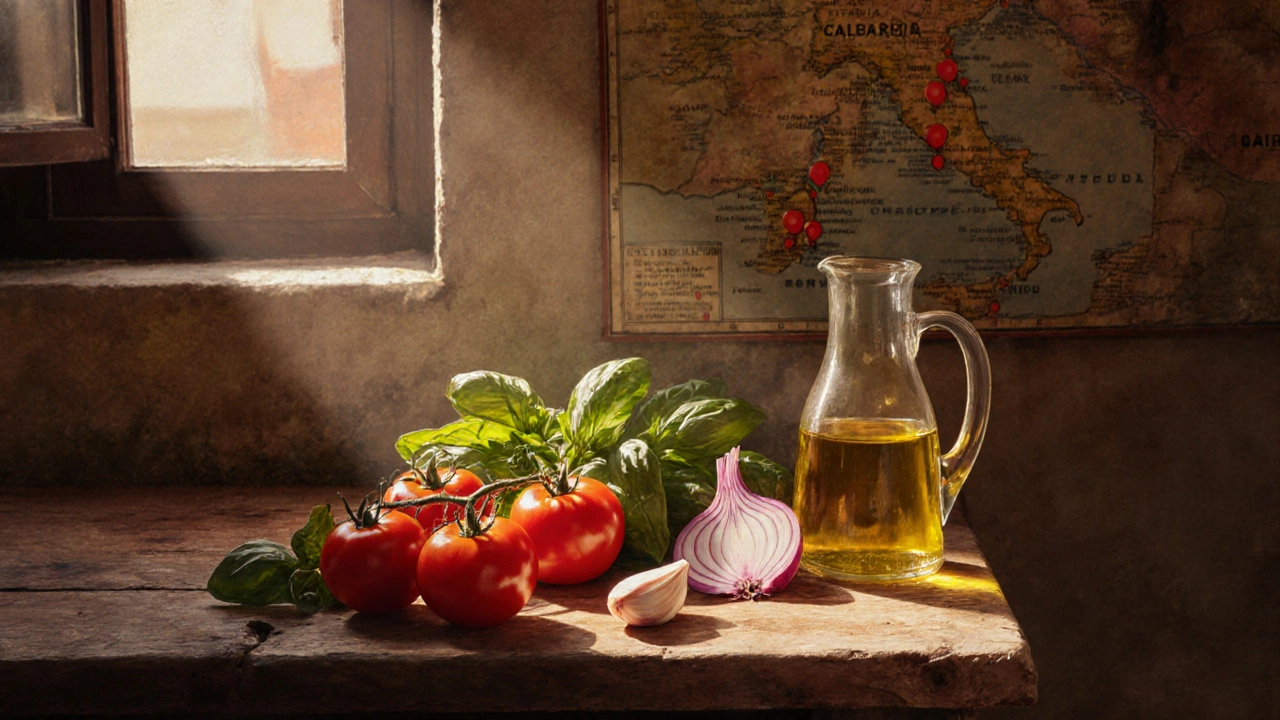Onion in Marinara: Boosting Flavor in Every Italian Dish
When working with Onion in Marinara, a classic base that blends sweet, savory and acidic notes to create a rich sauce for pasta, pizza and more. Also known as caramelized onion marinara, it offers depth that plain tomato sauces often lack. The magic starts with the onion, a vegetable that releases natural sugars when heated, and the marinara sauce, a tomato‑based blend seasoned with herbs. Together they form a cornerstone of Italian cooking, a cuisine that values balance, simplicity and seasonality.
Why the Onion Matters
First, the onion acts as a flavor‑building block. When you sauté it gently, the sugars caramelize, creating a sweet‑savory foundation. This process enhances the overall aroma and rounds out the acidity of tomatoes. In culinary terms, Onion in marinara encompasses flavor layering. The more you let the onion develop, the richer the sauce becomes, which is why many chefs swear by a slow, low‑heat start.
Second, the type of onion you choose changes the character of the sauce. Yellow onions give a deep, earthy backdrop, while white onions keep the flavor bright and crisp. Red onions add a subtle hint of sweetness that can brighten a hearty ragù. Each variety influences the final taste profile, so consider the dish you’re pairing with the sauce before you pick your onion.
Third, the timing of when you add the onion matters. Adding it at the very beginning of the sauté creates a uniform base, whereas adding it later preserves a bit of bite and texture, which can be useful in rustic, chunky sauces. This nuance relates directly to the desired sauce consistency and the overall mouthfeel of the dish.
Beyond the onion itself, seasonal ingredients play a big role. Fresh, in‑season tomatoes bring vibrant acidity, while a pinch of fresh herbs like basil or oregano adds brightness. When the sauce is built around peak‑season produce, the natural flavors shine without needing excess salt or sugar. This principle connects seasonal ingredients with flavor optimization in marinara.
Another practical tip is to de‑glaze the pan after sautéing the onion. A splash of wine, broth, or even a bit of water lifts the browned bits, infusing the sauce with that deep, caramelized taste. This step requires a liquid component to capture flavor and is a favorite among home cooks looking for restaurant‑level depth.
For those watching calories, you can swap a portion of the olive oil for a splash of water or low‑sodium broth while still achieving the same softness in the onions. The key is to keep the heat low enough that the onions release their moisture gradually, preventing them from frying. This technique balances health considerations with flavor integrity.
In terms of dish applications, onion‑rich marinara serves as a versatile base. It works beautifully with classic spaghetti, but also elevates baked dishes like lasagna, meatball subs, and even vegetable gratins. The sauce’s depth can turn a simple bean stew into a comforting weeknight meal, aligning with the comfort‑food trend seen across many popular food articles.
When you pair this sauce with protein, the onion’s sweetness helps mellow strong flavors. Think of a slow‑cooked beef ragu simmered in marinara – the onions act as a bridge between the meat’s richness and the tomatoes’ acidity. This harmony demonstrates how onion in marinara supports protein integration in hearty meals.
Finally, storage is straightforward. Cool the sauce quickly, then refrigerate for up to four days or freeze for three months. Re‑heat gently on the stove, adding a splash of water if it thickens too much. Proper storage maintains flavor integrity over time, so you can enjoy your homemade sauce whenever you need it.
Whether you’re a beginner looking for a solid sauce recipe or an experienced cook tweaking a family favorite, mastering the onion in marinara will raise the bar for your entire kitchen. Below you’ll find a curated set of articles that dive deeper into related topics – from comfort‑food classics and energy‑saving cooking methods to ingredient‑specific guides – all of which can help you put these tips into practice and expand your culinary repertoire.

Do Italians Add Onions to Their Sauce? The Truth About Italian Tomato Sauce
Explore why Italian sauces sometimes include onions and sometimes don't. Learn regional traditions, flavor impacts, and practical tips for your pasta dishes.
More Detail